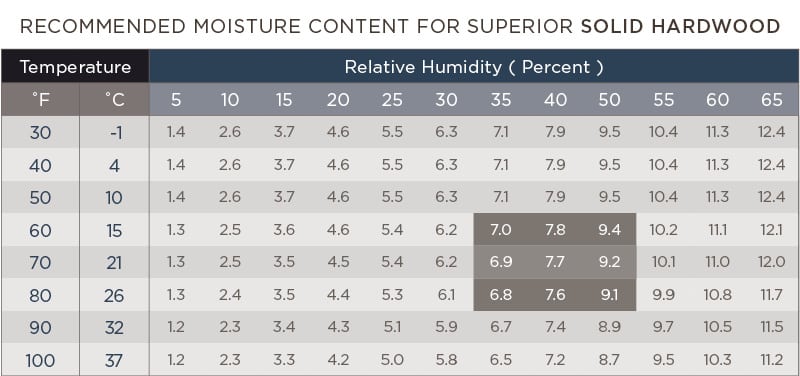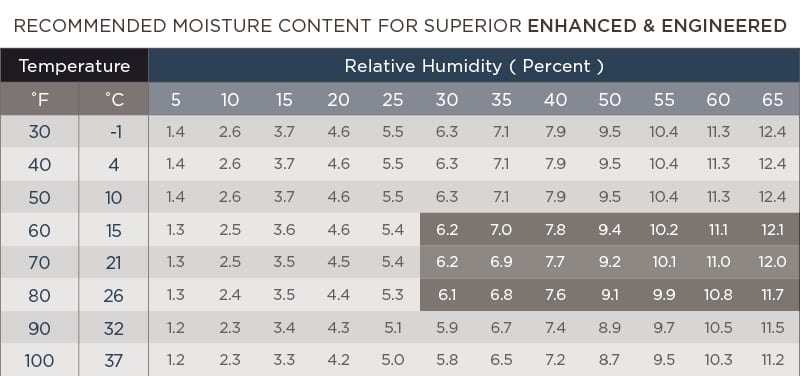Wood &
Water
Facts
Moisture Matters
Weight, shrinkage, strength and other properties depend on the moisture content of wood. In trees, moisture content may be as much as 200 percent of the weight of wood substance. After harvesting and milling, the wood will be dried to the proper moisture content for its end use.
Generally, flooring is expected to shrink in dry environments and expand in wetter environments. The ideal moisture content for flooring installation can vary from 4 to 18 percent, depending on the wood species, the geographic location of the end product and time of year. Most oak flooring, for example, is milled at 6 to 9 percent.


Water leaks and spills will be absorbed by wood floors. Most often though, damage to wood floors is caused by high humidity.
Cupping
Cupping is when the edges of a board are high and its center is lower, it can occur after water spills onto the floor and is absorbed by the wood, but high humidity is more often the cause.
Cupping is caused by a moisture imbalance through the thickness of the wood; the wood is wetter on the bottom of the board than on the top. The moisture imbalance can be proven by taking moisture meter readings at different pin depths.
Crowning
Crowning is the opposite of cupping; the center of a board is higher than the edges. Moisture imbalance is sometimes the cause of crowning, if excessive moisture is introduced on the top of the floor, perhaps from excess water used in maintenance, or the result of plumbing leaks.
It should be noted that some slight cupping and crowning may occur naturally, and should be tolerated. Largely seasonal in occurrence, it’s common in wider planks. Our micro-bevel minimizes the appearance as opposed to a square-edge flooring product.


